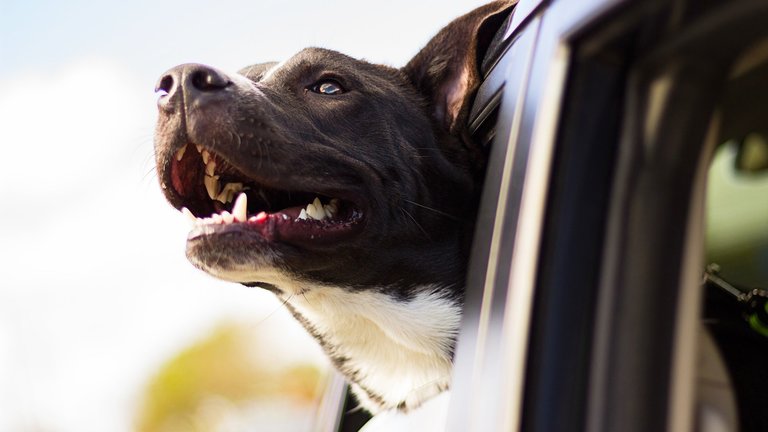5 Reasons Your Dog is Smarter Than You
A dog’s sense of smell is legendary but did you know they have better night vision and hearing than us mere humans do? Senses aside, dogs have two more super powers that we can actually learn from.
1. The Magnificent Nose
A dog’s sense of smell is 10,000 to 100,000 times more powerful than ours. To put this in terms we can better understand, let’s make an equivalent comparison with our sense of vision. If you can see something a third of a mile away, your dog can see it 3,000 miles away!
Dogs can detect cancer in cancer patients and hypoglycemia in diabetics. They can smell our fear, sadness and anxiety. They serve the community by sniffing out drugs and explosives, and they successfully track down missing persons and criminals.
A dog’s nose is a magnificent piece of equipment with 300 million olfactory receptors (we have a mere 6 million) and a sizable portion of their brains devoted to the joy of smelling (40 times more than we devote to our sense of smell). They also have a labyrinth-like smelling chamber in their nose through which air passes and odor molecules are analyzed, and a special nasal organ and brain area devoted entirely to smelling pheromones. We have none of these.
There are dog sports dedicated to the sense of smell, which is a fun way to celebrate and nurture your dog’s super power. This is an exciting subject and scientists are studying the dog’s ability to smell more than ever before.
Vitamin A is associated with healthy sensory cells in a dog’s nose and brain. Give your dog vegetables (especially carrots and sweet potato), eggs and organ meats such as chicken, which are all good sources of vitamin A. Providing a healthy wholesome diet for your dog will keep him sniffing away for years.

2. Dogs Can See in the Dark
A dog can see in light levels that are five times dimmer than what the human eye needs. This is due to the structure of the dog’s eyes.
- Dogs have large pupils, which let in more light.
- Their retinas have more rods, which are sensitive to light and motion.
- Most importantly, they have a mirror-like membrane at the back of their eyes. So any light not absorbed by the rods will bounce off the membrane giving the rods a second chance to absorb the light and giving your dog those eerie glow-in-the-dark eyes.

3. Dogs Have Powerful Hearing
Dogs are born deaf. Not until they are 3 weeks old can they hear, but once their hearing has fully developed, they can hear four times the distance we can.
Dogs have 18 muscles in their ears, enabling them to swivel and tilt their ears, like a radar, to pinpoint tiny sounds across great distances. It explains why a dog will cock her head, perhaps even bark, long before you hear a visitor at the door. Dogs with erect ears (such as Boston Terriers or German Shepherds) have better hearing than floppy-eared dogs (such as Spaniels).
Dogs can hear higher pitched sounds than we can, too. A dog’s frequency range is 67 – 45,000 Hz compared to the human range of 64 – 23,000 Hz. That’s why, to us, a dog whistle doesn’t seem to make a sound. Its pitch is too high for our ears to hear. These whistles are great for training your dog, especially for herding activities, because you can send signals to your dog using a series of short or long blows without ever using your voice.
Inside the canine ear structure is a network of tiny muscles that respond to slight fluctuations in sound vibrations by instantaneously contracting and relaxing. It is this sensitive structure that enable dogs to hear such an astonishing range of frequencies.
Deaf people can have the assistance of a hearing dog that will alert her handler to important sounds, such as doorbells, smoke alarms, ringing telephones or alarm clocks.

4. Dogs Are Experts in the Art of Body Language
A dog’s ability to communicate through facial expressions and body language often leaves us in no doubt of the message they are conveying.
There’s a YouTube video of three poodles. The pet parent asks “Who did this mess?” The two brown poodles look directly at the white poodle who stares at the ground. “Cody, did you do this mess?” asks the pet parent.
Cody, a brown poodle, looks at the camera and cocks her head.
“Murphy, did you make this mess?”
Murphy, the other brown poodle cocks his head, too.
“Maggie, did you make this mess?”
Maggie backs away with her tail between her legs and disappears into the nearest room. Guilty as charged. Although, to be clear, the body language displayed by Maggie is actually conveying fear of the reprimand not guilt over the mess.
A furrowed brow and large eyes can also convey a sense of fear or stress, while a full body wag tells us the dog is happy.
Some of the most common body poses are:
- ALERT: Ears pricked, head raised or even cocked, mouth closed.
- AGGRESSIVE: Hackles raised, ears forward or to the side, lips curled. This dog is showing his dominance and warning that he will attack if challenged.
- AFRAID: Hackles raised but his ears flattened back, body lowered and tail down. The dog is fearful but not necessarily submissive and may attack if he continues to feel threatened.
- SUBMISSIVE: The dog rolls onto his back exposing his stomach, tucks his tail between his legs and avoids eye contact. This dog is indicating total surrender.

5. Dogs are Masters of Mindfulness
A dog knows how to live in the moment and enjoy every one of her senses.
Going for a drive with the window down is akin to skydiving for a dog. It’s a rush of ecstasy!
Going for a walk will do it, too. Playing with a ball, swimming at the beach, sniffing, running, fetching, playing, jumping, spending time with her adored human. A dog enjoys all of these simple pleasures by being fully present and not mulling over the future or the past.
Taking the time to enjoy each moment of your life is both important and necessary. We all tend to rush through each day to ‘get things done’ without actually enjoying any of our tasks along the way. As Ralph Waldo Emerson once said, ‘life is a journey, not a destination’.
Make your daily walks with your dog that special moment where you slow down and take in everything around you. Be awake to the present moment. This mindfulness will help you to live with the same kind of joy that your dog does.

Keep your dog in perfect health with free WAGSTA walkies, weight and wellness tracking. Join the pack and create the optimal healthy lifestyle for your dog!
